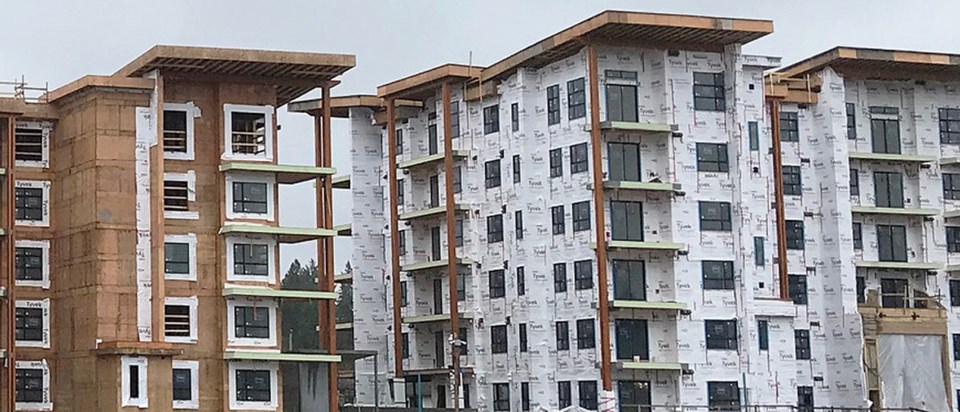The provincial government can set all the housing targets it wants for Port Coquitlam.
But unless it comes to the table with more cash, its goal for more homes can’t be met.
That was the comment from PoCo’s director of development services today, July 30, after Victoria released its third round of five-year housing numbers for 10 communities — a move designed to ease the housing crunch across B.C. and make homes affordable:
- Colwood = 940 homes
- City of Langley = 1,844 homes
- Mission = 1,798 homes
- New Westminster = 4,432 homes
- North Cowichan = 1,233 homes
- North Saanich = 419 homes
- Port Coquitlam = 2,279 homes
- Prince George = 1,803 homes
- View Royal = 585 homes
- West Kelowna = 2,266 homes
The targets follow last month’s five-year wish list for the province’s second cohort:
- Central Saanich = 588 homes
- Chilliwack = 4,594 homes
- City of North Vancouver = 3,320 homes
- Esquimalt = 754 homes
- Kelowna = 8,774 homes
- Maple Ridge = 3,954 homes
- Nanaimo = 4,703 homes
- Sidney = 468 homes
- Surrey = 27,256 homes
- White Rock = 1,067 homes
Port Moody was in the first iteration for five-year targets, announced last September:
- Abbotsford = 7,240 homes
- Delta = 3,607 homes
- Kamloops = 4,236 homes
- District of North Vancouver = 2,838 homes
- Oak Bay = 664 homes
- Port Moody = 1,694 homes
- Saanich = 4,610 homes
- Vancouver = 28,900 homes
- Victoria = 4,902 homes
- West Vancouver = 1,432 homes
Port Coquitlam top planner Bruce Irvine told the Tri-City News this morning that PoCo’s number aligns with the city’s Housing Needs Report, which calls for about 550 more homes a year, or 2,750 over five years (versus 2,279 set by the province).
Still, the municipality’s best year to date was in 2022 at 517 new builds, Irvine said. And, over the past decade, PoCo has seen an average of 340 homes go up per year.
Irvine said PoCo city staff have had little communication with the housing ministry before the new legislation building mandates went into effect last fall.
He believes the dictated target allocations don’t make sense as municipalities have restricted controls, don’t have the infrastructure — roads, sewers, etc. — to handle the extra growth and don’t have the money from BC Housing and CMHC to partner on housing.
The Metro Vancouver targets, he said, are also based on “faulty math” as the provincial government has taken a one-size-fits-all approach in terms of per-capita population.
'Not the best fit'
Irvine said while PoCo’s and B.C.'s housing goals are similar, the breakdown by Victoria “is not the best fit for the community” as PoCo aims to build more homes for families — that is, with at least three-bedroom units — in a variety of housing styles.
Specifically, the provincial government is calling on PoCo to produce 1,277 owner units and 1,002 rental units by 2029, of which 494 rentals can market and 508 below-market; it also wants 50 supportive rental units with on-site supports for individuals in need.
But Irvine contends several builders and nonprofits wanting to construct affordable and supportive housing in PoCo are stuck and losing money under the legislation upheaval.
“The province wants to appear to be solving the housing crisis by putting the blame on cities,” Irvine said. “What we can control at local government are the rezoning and how fast that takes place, but what this feels like is a father telling his son to grow taller.”
Victoria said it will oversee the housing progress and work with the 30 communities.
In its news release, the province said it’s already handed out money for local governments to build more rapidly, citing the $1-billion Growing Communities Fund, the $10 million under the Local Government Development Approvals Program and the $51 million in grant-based funding for planning or projects, such as updating existing zoning bylaws, housing needs reports and official community plans.





